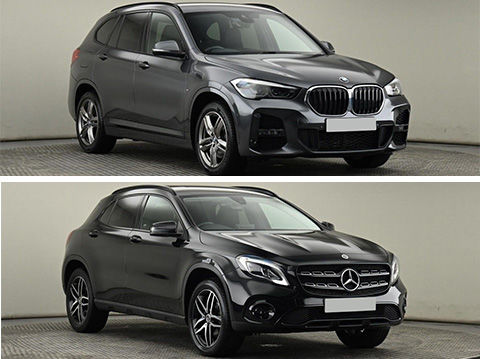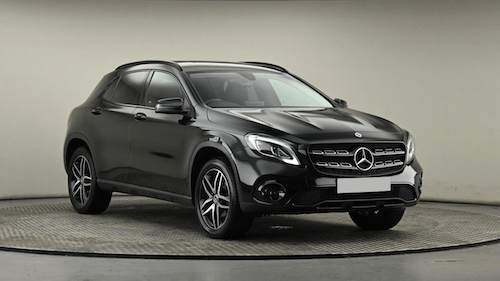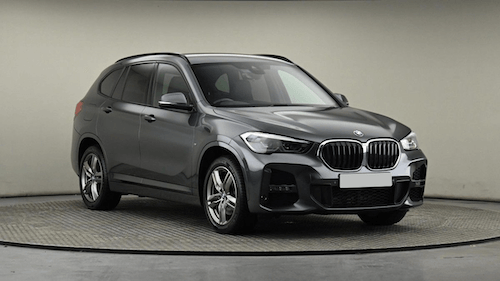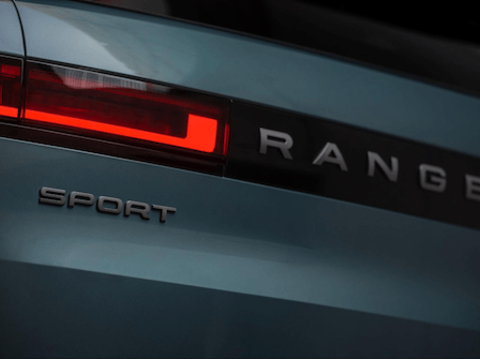Mercedes GLA vs BMW X1

Choosing a compact SUV in the premium segment often comes down to fine details, and two models that regularly appear on shortlists are the Mercedes GLA and the BMW X1. Both offer strong build quality, well-appointed interiors, and a range of useful features for everyday driving. However, they approach the concept of a small SUV slightly differently. In this comparison, we take a closer look at their practicality, equipment, and driving experience to help you decide which might suit your needs best.
Exterior and Practicality

The Mercedes GLA presents itself as a compact SUV with a slightly more rounded, hatchback-inspired shape. It includes roof rails and privacy glass as standard, which contribute to its functionality. The design is subtle and avoids excessive styling elements. It is easy to manoeuvre and park, making it suitable for city use, while still offering the higher ride height typical of SUVs.

The BMW X1 has a more traditional SUV stance, with a taller body and a more upright profile. This shape contributes to slightly better rear passenger headroom and more space in the boot area. Like the GLA, it includes practical features such as front and rear parking sensors and an automatic tailgate. Its design follows BMW’s usual approach – clean, functional and understated.
Both vehicles have five doors and seating for five occupants, but the X1 feels slightly roomier overall, particularly in the rear. If boot space is a key factor, the X1 has a slight edge due to its more vertical shape and adjustable rear seat backs.
Interior Features
Inside the GLA, there’s a black leather interior with a tidy dashboard layout. Key features include cruise control, DYNAMIC SELECT driving modes, a multifunction trip computer, and speed-sensitive steering. The seat comfort package ensures front seat occupants can make adjustments easily to suit longer journeys. Additional systems like the emergency call function and fluid level monitoring give drivers more oversight of the car’s condition.
The BMW X1 also features black leather upholstery and a clear, organised dashboard. Its instrument cluster includes superimposed analogue dials with a digital colour display. The central 8.8" screen is used to manage the navigation system, media, and other settings via the iDrive controller. The presence of programmable buttons for common functions makes it simple to use on the move. It also includes BMW Teleservices, brake pad wear indicators, a service interval display and connected services such as BMW Online and Remote Services.
In terms of seat comfort, both are supportive and suited to longer drives, although the X1 benefits from slightly more upright seating and better outward visibility due to its design.
Technology and Connectivity
The GLA includes smartphone integration with Apple CarPlay and Android Auto, a rear view camera, and collision warning systems. Live traffic capability is also included, which can help with route planning. The keyless start and anti-theft protection package offer added convenience and peace of mind.
The X1 includes Apple CarPlay, real-time traffic information, and a navigation system that stores maps on a hard drive and can be updated via USB. It also offers attentiveness assist, a tyre puncture warning system, and an ambient temperature display. One notable feature is BMW’s Personal Profile system, which allows drivers to store preferences for features such as door locking and climate control.
While both vehicles are well equipped, the BMW has a slight advantage in terms of system integration and user interface, thanks to the well-developed iDrive system and a slightly more comprehensive suite of connected services.
Driving Experience
The Mercedes GLA is powered by a 1.6-litre petrol engine producing 122 PS and is paired with a 7-speed automatic gearbox. It features a range of driving modes, including ECO, Comfort, Sport and Individual, allowing the driver to tailor the response depending on preference or driving conditions. Steering is light but responsive, and the suspension is geared towards comfort rather than sharp handling.
In contrast, the BMW X1 uses a 2.0-litre petrol engine and an automatic gearbox. It incorporates an electro-hydraulically controlled clutch and variable drive torque distribution between the front and rear axles. This makes the X1 more composed on uneven or twisting roads. Steering is precise and well-weighted, and the suspension is firmer than the GLA’s but still comfortable. It is particularly well suited to motorway driving and covers longer distances with ease.
Fuel Economy and Emissions
In terms of efficiency, the GLA has a combined MPG figure of 37.7, while the BMW X1 achieves 39.8 MPG. Emissions are also slightly lower in the GLA at 144 g/km, compared to 162 g/km in the X1. Both figures are typical for small petrol SUVs, and neither vehicle is positioned as a low-emission option, but the GLA does edge ahead slightly in this area.
The Mercedes GLA and BMW X1 both offer practical, well-equipped options in the compact SUV category. The GLA focuses more on comfort, ease of use and technology that supports a calm driving experience. The BMW X1, on the other hand, leans towards a slightly more engaging drive, with greater interior space and more advanced integration of navigation and connected services.
Ultimately, the better choice will come down to your individual preferences. If a more comfort-oriented ride and marginally lower emissions are important to you, the GLA may be the better fit. However, if you value a more engaging drive and a roomier interior, the X1 presents a practical alternative. To compare both models in person and explore your options further, visit Saxton 4x4.



